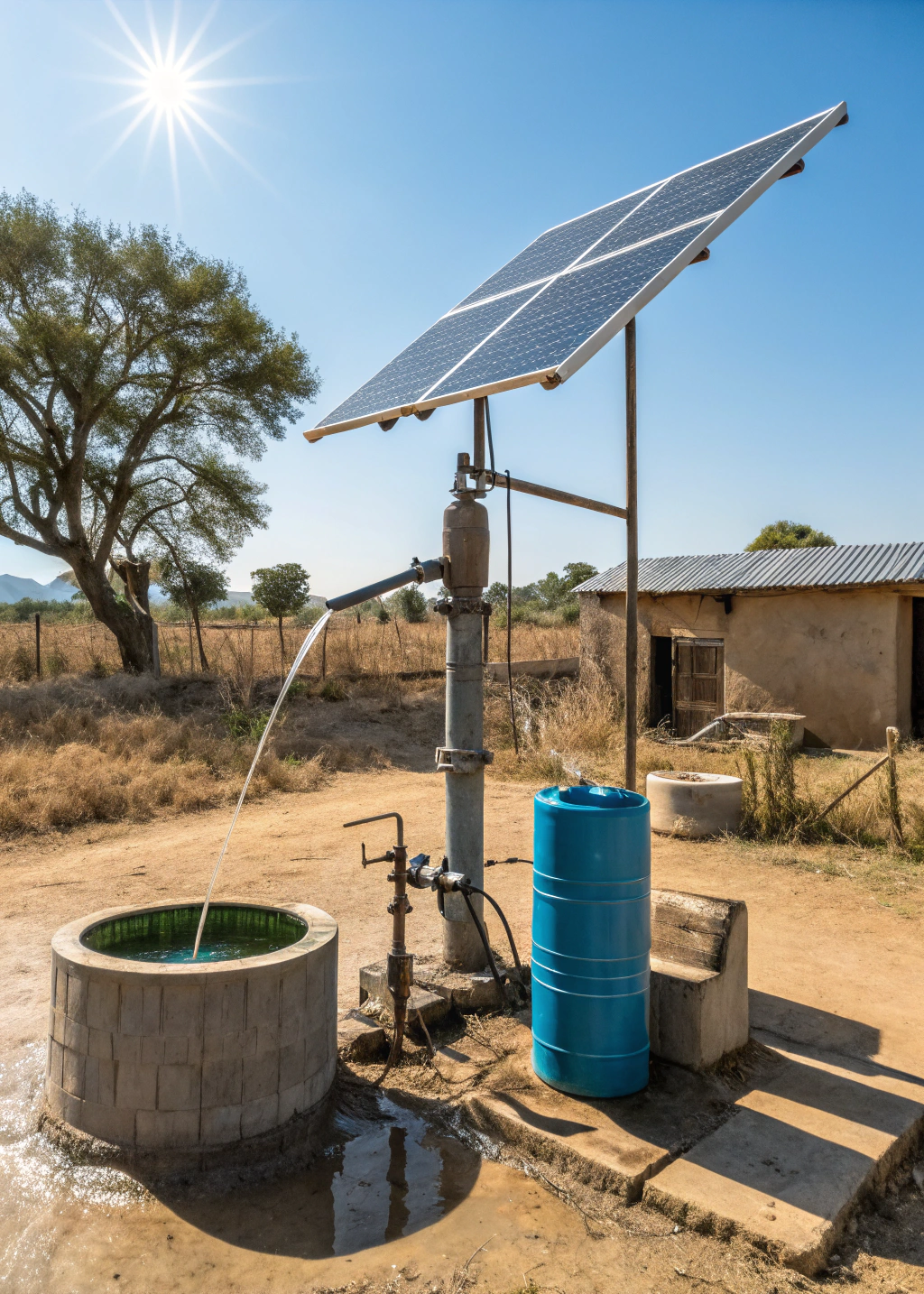What impact does water quality (sediment, corrosiveness) have on the pump body of a solar water pump?
•
What impact does water quality (sediment, corrosiveness) have on the pump body of a solar water pump?
Solar water pumps are vital for off-grid irrigation, but how does water quality affect their durability?
Poor water quality (high sediment content or corrosive elements) accelerates wear on pump components, particularly the impeller and casing, reducing efficiency and lifespan by up to 30%.

From sand-laden boreholes to chemically aggressive groundwater, water quality challenges require tailored solutions. Let’s explore how to safeguard your solar pump investment.
Is a controller required for the system? What role does it play?
Ever wondered why some solar pumps fail prematurely while others thrive? The secret often lies in the controller.
A controller is essential for solar water pumps, protecting against dry running, voltage fluctuations, and optimizing energy use, which can improve pump lifespan by 20–40%.
![Solar pump controller with LCD display]
Critical Functions of a Solar Pump Controller
-
Dry-run protection
- Shuts off the pump when water levels are low to prevent motor burnout.
-
Maximum Power Point Tracking (MPPT)
- Adjusts voltage/current to maximize solar energy harvest, even in cloudy conditions.
| Feature | Benefit |
|---|---|
| Overload protection | Prevents motor damage |
| Soft start | Reduces mechanical stress |
- Remote monitoring (advanced models)
- Tracks performance via GSM/SMS, alerting users to issues like clogging or low efficiency.
Pro Tip: Controllers with adaptive algorithms adjust pump speed based on water demand, cutting energy waste by 15–25%.
How to install the system in cold regions (low temperature/icing conditions)?
Installing a solar pump in freezing climates? Without precautions, ice can crack pipes and stall pumps.
In cold regions, use insulated piping, submersible pumps below frost lines, and controller heaters to prevent freezing, ensuring year-round operation.
![Insulated solar pump installation in snow]
Cold-Weather Installation Checklist
-
Pump placement
- Submersible pumps should be installed ≥1m below frost depth (varies by region).
-
Pipe insulation
- Wrap pipes with closed-cell foam or use heat tape for active warming.
-
Controller modifications
- Choose models with built-in heaters (−20°C to 60°C operating range).
-
Winter drainage
- Install drain valves to empty pipes during prolonged inactivity.
Case Study: In Alberta, Canada, farmers using insulated solar pumps with glycol-based fluids reported zero freeze-related failures over three winters.
How to remotely monitor the operating status of the water pump?
What if you could check your pump’s health from your smartphone? Remote monitoring makes it possible.
Remote monitoring for solar water pumps uses IoT sensors and GSM/GPRS to relay real-time data on flow rate, energy use, and faults, enabling proactive maintenance.
![Dashboard showing solar pump performance metrics]
Key Monitoring Components
-
Sensors
- Flow meters, voltage sensors, and pressure transducers collect operational data.
-
Communication protocols
- GSM/GPRS: Sends alerts via SMS.
- LoRaWAN/LTE-M: Ideal for remote areas with low power needs.
-
Cloud analytics
- Platforms like SolarEdge or PumpMonitor.ai predict failures by analyzing trends (e.g., rising amp draw = impeller wear).
Integration Example: A Kenyan dairy farm reduced downtime by 60% after adopting SolarKing’s app-based alerts for pump blockages.
Conclusion
Water quality, controllers, cold-weather prep, and remote monitoring are pivotal for solar pump efficiency and durability.
To maximize solar pump performance: mitigate sediment/corrosion damage, use smart controllers, winterize systems, and adopt IoT monitoring.




